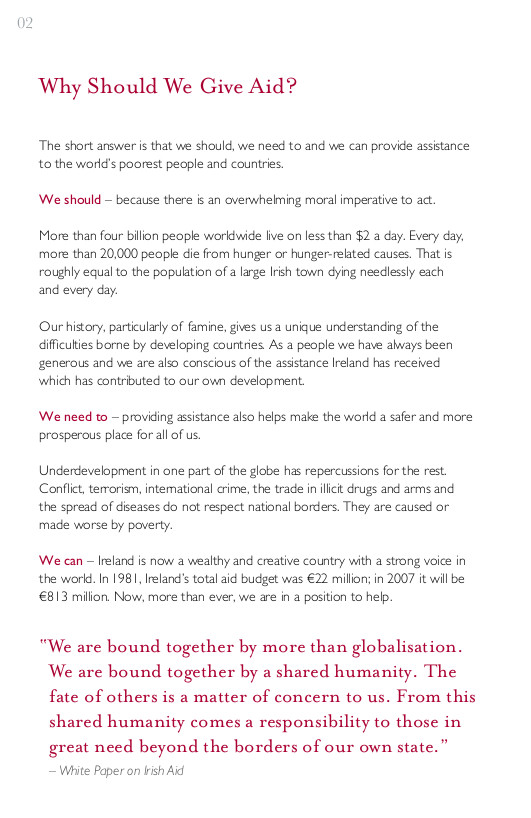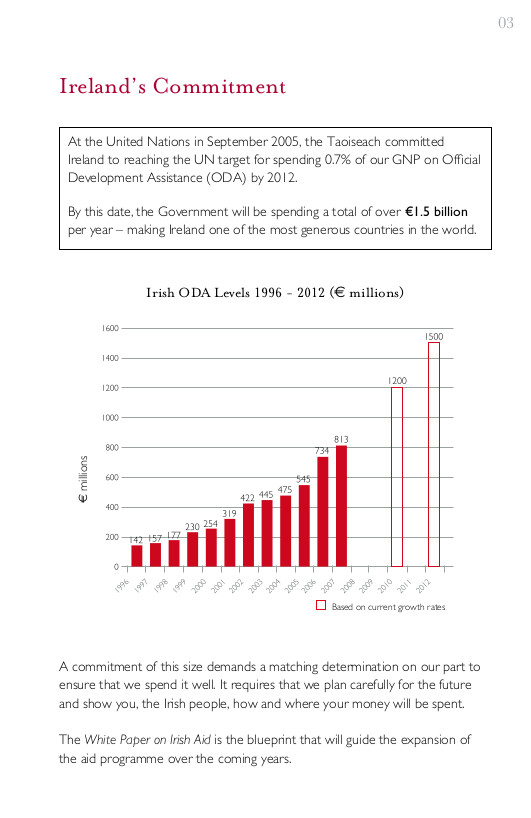
The two pages exhibited from the summary paper are from Ireland’s first ever White Paper on Irish Aid: ‘a significant milestone in the thirty-two-year history of our aid programme’, as Ministers Dermot Ahern and Conor Lenihan wrote in the preface and was based on the an open call for submissions and public meetings held throughout Ireland. In his introduction, Taoiseach Bertie Ahern stated:
“It is an affront to our common humanity, five years after the Millennium Summit, that 30,000 children die each day from easily preventable diseases, or that 100 million people go to bed hungry, or that 100 million children are not receiving a basic education. Speaking to the United Nations General Assembly in September 2005, I set out the challenges that face us today. Because of our history, Ireland can rightly claim to empathise with those who are suffering from disease, poverty and hunger every day around the globe. But empathy is not enough. Our actions must speak louder than our words.”
Setting out Ireland’s most ambitious road map in the fight against global poverty since the aid programme began in 1974, the White Paper includes a rationale on ‘why should we give aid?’ and (for the first time) and targets towards increasing official development assistance to reach the UN target of 0.7 percent of Irish gross national product (GNP).


Published two years before the Irish banking crisis in 2008, the White Paper also reflects the outcome of two decades of continuous campaigning by members of the NGO alliance Campaign-Aid and Comhlámh, which aimed ‘to put foreign policy issues such as development co-operation and action for international economic justice high on the Irish political agenda’.
The target of reaching the UN target of 0.7 percent GNP has been recast within the context of new ‘Sustainable Development Goals’, to be achieved by 2030.
For more, take a look at the full version of the Irish Aid White Paper (131 pages, 2006)
Source: Irish Aid, Department of Foreign Affairs and Trade
Year: 2006
Courtesy of the Department of Foreign Affairs and Trade